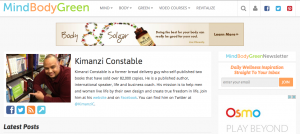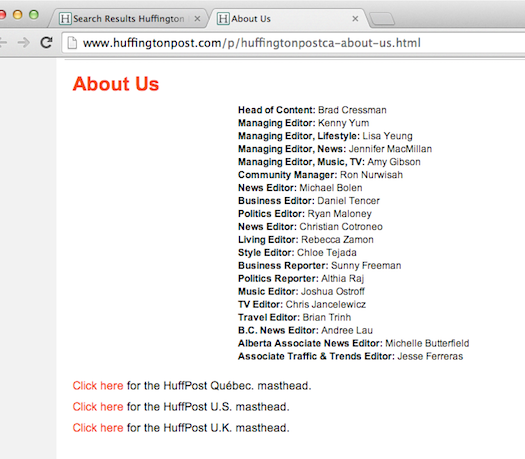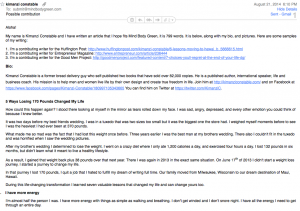How To Land Articles On Large Websites (Part 2)
Aloha and welcome back! I hope you enjoyed part one and took away some yummy nuggets. If you did, and already started applying them, comment below, and tell me what you did!
We’re here because guest posting is one of the best ways to build your audience. Two articles on the Huffington  Post and the Good Men Project have gotten this website over 12,000 new email subscribers in the last two months.
Post and the Good Men Project have gotten this website over 12,000 new email subscribers in the last two months.
Getting interviewed on podcasts and radio shows is great, but think about where people are listening to those shows. They’re in the car, on the way to work, or they’re working out.
If they like what you’re saying, they have to remember to come home and look you up. When they’re reading a guest post, or article on a large website, and like it, all they have to do is click a link and they’re on your website in seconds. It’s instant and within minutes they can be signing up for your email list. That’s the power of a good guest post.
In the last post I talked about the writing side of things. You have to do your research and write deeper content. If you missed it, there are some key takeaways that you can use. Today let’s get into the strategy.
3. Have the right pitch
Having the right pitch means a few things. Let’s start with whom to pitch to. Remember when we talked about research? Getting articles featured on large websites only happens when you pitch it to the right person.
Last post we talked about the Huffington Post and “verticals.” Have you figured those out yet? Verticals are the categories in the Huffington Post; the one I normally post in is “Healthy Living.”
When you get in as a contributor at the Huffington Post, you can post in whatever vertical you want. If you’ve done your research, you should know that every vertical has its own editor.
For you to have a chance to write for the Huffington Post, you have to send your post to the editor of whatever vertical your post fits under. The Huffington Post does have a standard place to submit articles, but can you imagine how many people are submitting articles everyday? One editor told me it was like 30,000 submissions a day.
To cut through all that, send your article to the right editor. That way you can get a quick yes or no. They’re usually very busy, so you should get your answer pretty quickly.
 With a little research you can find out who’s the best person to pitch your article to on large websites. On blogs, it may be the owner of the blog. How do you reach them?
With a little research you can find out who’s the best person to pitch your article to on large websites. On blogs, it may be the owner of the blog. How do you reach them?
Think about emails. Most of us have email addresses with a your name@thedomain of the website. If that bloggers name is Jeff his email is probably Jeff@thiswebsite.com.
This is just a guess, but it’s a good one. With some digging you can find out who the right person to pitch to is, all this information is available online. Getting articles featured on large websites starts with deep, strong content. After that it’s about pitching to the right editor, they are the ones who decide what get’s published or rejected.
Look at the picture. I did some of your research for you. It’s a list of editors at the Huffington Post. Look at their names, and use the email tip I just gave you. To reach a Huff Post editor their email address will end in @HuffingtonPost.com.
4. The structure of your pitch
I use to pitch pretty horribly. I used the “flattery technique.” This usually goes something like this:
“Hello so and so,
I’m a huge fan of your blog. The content is great. I would love to give back by writing a guest post for your audience. Do you take guest posts?”
I used this all the time with mixed results. First, the blogger sees right through this. They know you want exposure to their audience so the flattery, and giving back line seems fake to them.
A better approach is honesty with something to back up what you saying. Here’s a better structure.
“Hello so and so,
I’m a fan of your website. My favorite article is “Name a specific article that has helped you.” I have written a guest post that speaks to your audience that’s at the bottom of this email (bloggers HATE attachments, send the post in the body of the email).
Here are some samples of my work on these websites (name off a few places you’ve guest posted and hyperlink the articles).
Thank you,
Your name”
Then paste the article or articles. Another great strategy is to post three topics that you want to write about. You then bullet point out what each of those posts will be about.
The blogger can then decide which ones he likes. By listing three, if he doesn’t like one or two, he has options. They know best and will tell you what works best for their website.
Here is the email I sent to Mind Body Green when I wanted to write for them. I sent it on Friday, and by Monday, my first post went live.
Use this same structure for large websites, like the Huffington Post, when you pitch the right editor.
That’s it. If you want to get your work on a large website that can dramatically increase your audience:
Do your research. Who do you pitch to? What is the best article to write? How much research did you put in the article? These questions have to be answered if you’re going to successfully land a big guest post.
Dig deeper. Write from your heart. Get past the normal fluff and write about the topics most people will be afraid to write about. Your post should strike a nerve and educate at the same time.
Figure out the best approach. Figure out whom to pitch to and what about. Do your research and find the person that can make it happen.
Have the right structure. Don’t try to land your post with flattery. Let your research and content speak for itself. Show your past work to prove what you’ve got.
You can so do this and the results will be life changing! Name one large website you’re going to pitch?
P.S. Today Chris Guillebeau’s new book releases! I had the honor of interviewing Chris for the Huffington Post. Shares are greatly appreciated, I want to help Chris spread the message of this book.




